Welcome to the BioImaging Centre

What the BIC has to offer
- State-of-the art microscopes
- Laser scanning confocal fluorescence
- Zeiss LSM880
The Zeiss LSM880 confocal microscope is a powerful imaging tool used in biological and materials science research. It utilizes laser scanning technology to generate high-resolution, three-dimensional images of samples, allowing for the visualization of subcellular structures and fine details of tissues and materials. The LSM880 confocal microscope can be used for a wide range of applications, including fluorescence imaging, live-cell imaging and spectral imaging.
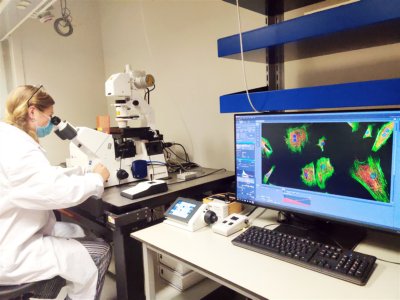
- Nikon A1
- Opera spinning disk
The Opera spinning disk is an advanced imaging system that utilizes a spinning disk confocal microscope to capture high-resolution images of biological samples.
This system is capable of high-speed, multicolor imaging of live cells and tissues, allowing researchers to study dynamic processes such as cell division and migration.
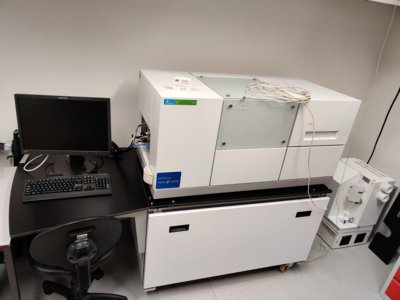
- Brightfield / Widefield fluorescence
- Zeiss Axio Observer
The Zeiss Axio Observer is a versatile microscope that can perform a range of basic imaging techniques such as brightfield, darkfield, phase contrast, and widefield fluorescence microscopy. This system is ideal for users who want to quickly visualize their samples.
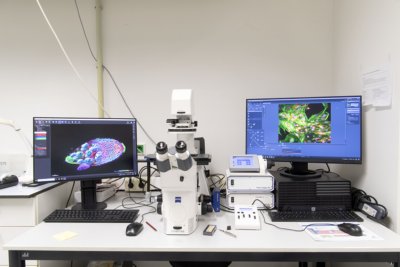
- Nicon Eclipse E400
The Nikon Eclipse E400 microscope is suitable for biological and materials science applications. It provides detailed imaging of samples and features advanced capabilities such as phase contrast and fluorescence microscopy for studying live cells and tissues.
The microscope has a camera connected to capture your images, very usefull together with our available Imaris image analysis software.
Overall, the Nikon Eclipse E400 is a versatile tool for scientific research for a variety of applications.
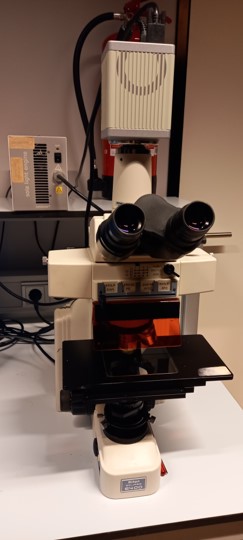
- Holotomography
- Tomocube
Observations of cellular morphology and activity often rely on labeling target molecules which can be invasive, alter the target molecules, and lack quantitative information. Common imaging tools, such as laser-based microscopes, may also cause phototoxic damage to cells. Holotomography (HT) imaging can visualize cells without labeling by capturing the light scattering properties of cellular materials using low levels of light intensity. The Tomocube HT-X1 Holotomography can collect and selectively color refractive index information to reveal cells and their organelles, while also providing quantitative 3D data such as volume, surface area, and dry mass.
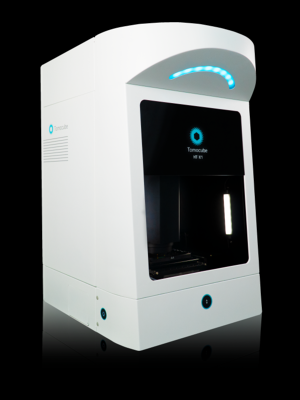
- Raman
- SEM-Raman (785nm)
The SEM-Raman microscope is a powerful analytical tool that combines two distinct imaging techniques - scanning electron microscopy (SEM) and Raman spectroscopy (at 785nm)
SEM provides high-resolution imaging of sample surfaces, while Raman spectroscopy provides detailed chemical information about the sample composition.
This combination enables researchers to study the morphology and composition of materials with a high degree of accuracy, making it useful for applications such as materials science and nanotechnology research.
Furthermore, the SEM-Raman microscope can be used to study a wide range of materials, including biological samples, polymers, semiconductors, and more. Overall, it is a valuable tool for characterizing the properties of complex materials and investigating their structure-function relationships.
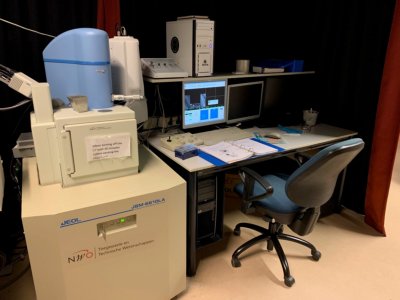
- Raman (640nm)
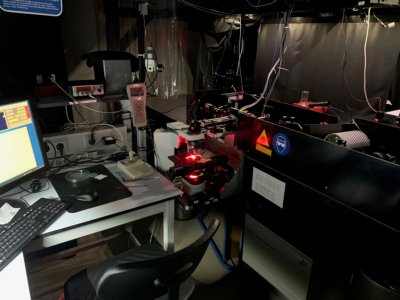
- Raman (405nm)
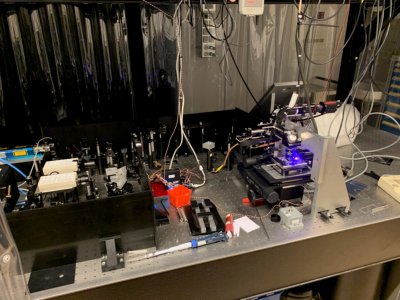
- Witec alpha 300 Raman (532, 633, 785nm)
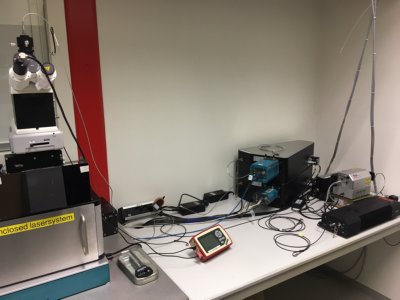
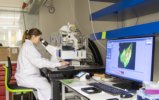
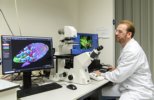
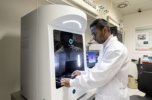
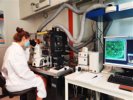
- Experimental microscopy
Next to commercial microscopes we also work on novel microscopy techniques to visualize even more!
- Wavefront-shaping 2-photon microscope
Our homebuilt Two-Photon laser scanning microscope is a powerful imaging tool used in biological and neuroscience research. It uses high-intensity infrared laser pulses to excite fluorescent molecules in living tissues, allowing for the visualization of fine details deep within the sample. Compared to traditional confocal microscopes, it can image deeper and with less photodamage. This microscope is ideal for studying the structure and function of living tissues, including the brain, and organs on a chip systems.
Additionaly our Two-Photon laser scanning microscope includes a wavefront shaping module which can correct for tissue distortions and sample abberations which allows for deeper imaging of biological samples. This module enhances the microscope's capabilities, enabling researchers to visualize previously inaccessible structures and processes within living tissues.
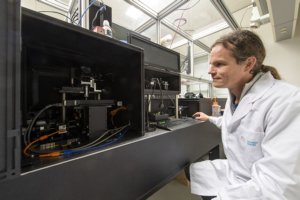
- Single cell analysis systems
- Hematology Analyzer
The Beckman Coulter Hematology Analyzer is a medical device used to perform complete blood count (CBC) tests, which measure the number and characteristics of blood cells in a patient's sample.
This analyzer uses a combination of electrical impedance and laser-based technology to rapidly analyze blood samples.
The analyzer can measure a wide range of blood parameters, including red blood cell count, hemoglobin levels, white blood cell count, and platelet count.
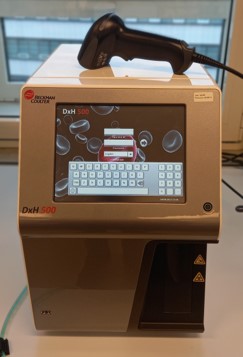
- VyCAP cell puncher
The VyCAP Single-cell Analysis System is used to isolate and analyze individual cells from biological samples.
This system uses microfluidic technology to sort and manipulate single cells, allowing for high-throughput analysis of their genetic and phenotypic characteristics.
The VyCAP system is capable of performing a range of assays, including PCR, sequencing, and protein analysis, to generate comprehensive information about individual cells.
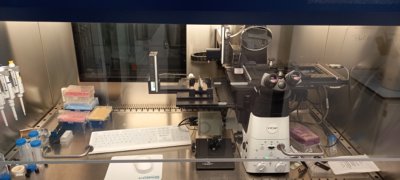
- FACS
A Fluorescence-Activated Cell Sorter (FACS) is used to sort and separate cells based on their physical and fluorescent properties.
The FACS machine uses a laser to excite fluorescently-labeled cells as they pass through a stream of fluid.
The cells are then sorted based on their fluorescent and physical properties using an electrostatic charge, allowing for the isolation of specific populations of cells.
- FACSAria II Flow Cytometric Cell Sorter
The BD FACSAria II Flow Cytometer is a state of the art device that allows users to analyse and sort cells and particles in micrometer range (1-50um) based on their physical properties like size and internal structure as well as fluorescence labeling.
It features 3 lasers (375nm UV, 488nm blue and 633nm red) and 13 sensitive PMT (PhotoMultiplier Tube) detectors making mulitplex staining and analysis of samples possible.
Cells or particles of interest can be defined using gates and instantly be sorted in any number from a single to a million of cells into 5ml tubes, 6/12/24/96/384 well plates or regular microscope slides (76x26mm).
Analysis and sorting of cells/particles can be achieved with a very high throughput of up to 20000 cells per second, making it a great device for analysing suspended particles.
Data analysis can be done with dedicated commercial software (DIVA 7.0), but data can also be exported and analysed in other freeware software or Matlab using a flowcytometry Matlab script.
Calibration beads for quantifying the sample volume, size or intensity of particles are available upon request.
In summary our flowcytometer can be of great help during your student or PhD research in analysing and characterizing your (biological) samples.
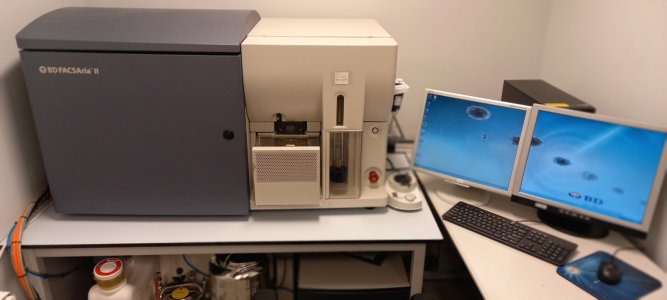
Sample Requirements:
- Concentration should be about 1 million cells/particles per milliliter
- A minimum sample volume of 100ul is needed
- Always bring an unstained negative control
For further questions ask Christian Breukers: c.breukers@utwente.nl
- Cell culture facilities
- ML - I
- Rotary Microtome Cryostat
The Leica CM1860 Rotary Microtome Cryostat is a specialized instrument used in histology and pathology laboratories to prepare thin sections of frozen tissue samples.
The rotary microtome allows for precise and consistent sectioning of samples, while the cryostat chamber maintains the samples at a low temperature to preserve their structural integrity.
The Leica CM1860 also features advanced cooling and heating systems, as well as a range of blade and specimen holder options, to enable a variety of cutting techniques and sample types.
- ML - II
- CRISPR-Cas9 available on request
- CO2 incubators, laminar flow hoods, centrifuges, freezer
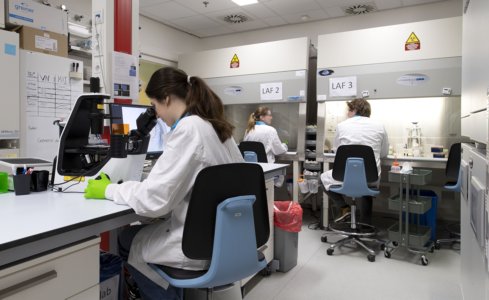
- Image analysis software
The BIC also offers image analysis software to analyze your data, free of charge. Our first available software package is Imaris.
This software can be used on the stand alone Imaris PC in the BIC lab (ZH160) or accesed remotely via "Remote Desktop".
If you want to make use of this software, please send an E-mail to:
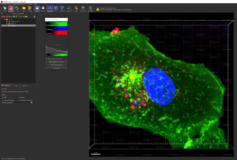
You would like to use one of our systems, now what?
- First contact
General access to BIC
When you want to use one of our systems in the BIC, you first need access to the lab. For this you need to fill out some documentation and have a short lab tour organized by us! During this introduction our supporting staff will explain general safety rules and how we organize the use of our systems.
Please read and fill out this document before requesting access to the BIC and our epic miscroscopes
Please mail the filled out document to: TNW-BIC-Support@utwente.nl
In this mail you can ofcourse introduce yourself, what you are planning on imaging and which microscope would be of interest to you. We always try to combine the general introduction with microscope introductions to make the proces as efficient as possible.
After the general introduction
After the general introduction you can request access to the BIC via SESAM (ZH161).
Now you are ready for an introduction to one of our microscopes! You can find all the needed information for this in the next chapters.
"Laser safety" & "Introduction to one of our microscopes"
Things you can do to make all our lives easier
Booked scheduler: You will use the Booked system to book our microscopes! So if you haven't already, make an account. you can use the filled info from the form above to complete the sign up process. Please add your project number as well.
- Laser safety
General
Many of our microscopes use lasers to help generate your images, fortunately, most of our systems have been build in such a way that they are safe to use without extra safety precautions.
Laser safety course
Some imaging techniques use such a high laser power, that a laser safety course certificate is needed to be sure the systems are used in a safe manner.
Microscopes that need a laser safety certificate before they can be used are:
In the course, you'll learn about the anatomy of the eye, as well as the different types of lasers and their wavelengths. Most importantly, you'll learn how to safely use lasers to avoid any potential harm or injury. We've provided a link below where you can access the course!
After finishing this course, please send your certificate to TNW-BIC-Support@utwente.nl
Before we can provide you with an introduction to these microscopes, it's necessary for us to receive a copy of your laser safety course certificate.
- Introduction to one of our microscopes
After you have finished the general lab introduction, you can request an introduction to one of our high end microscopes.
You can request an introduction by mailing to: TNW-BIC-Support@utwente.nl
Introductions for the microscopes by our supporting staff are free of charge, after which you get:
- Booking rights in our Booked system.
(read more about booked in chapter: "General access to BIC" - You will be added to the mailing list of the microscope of your choosing
To keep everyone happy, we ofcourse have some booking rules, please please please read them carefully in the document below.
For slightly more experienced users, working on our microscopes outside office hours is also possible! For that, please read the rules for working outside office hours below. After that you can request after hour access by mailing to: TNW-BIC-Support@utwente.nl
- Booking rights in our Booked system.
We always try to assist researchers in addressing complex imaging challenges. We provide training and support to users of our imaging systems, ensuring that users have the skills and knowledge needed to operate the equipment effectively.
In addition, our technicians are available to troubleshoot issues and provide guidance on experimental design. For researchers who require more advanced imaging solutions, our technicians can also work with them to develop customized imaging protocols and techniques.
The BIC is available for both the University of Twente and external users.
The BioImaging Centre is a TechMed facility and affiliated with the NL-BioImaging AM distributed infrastructure.
